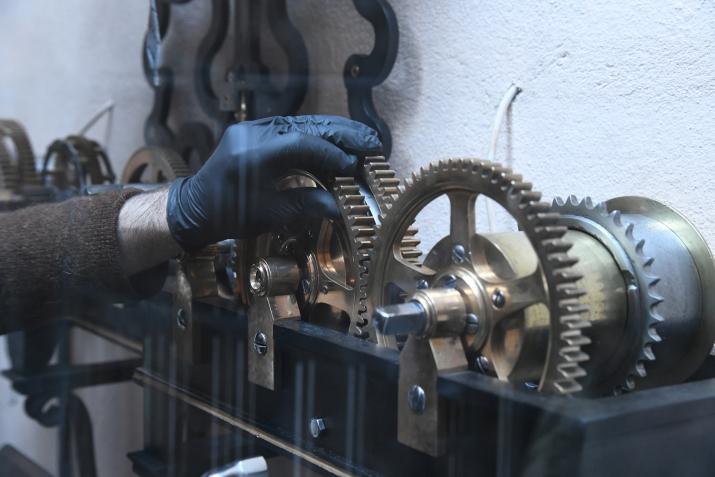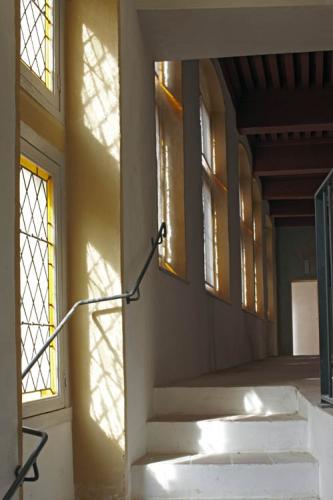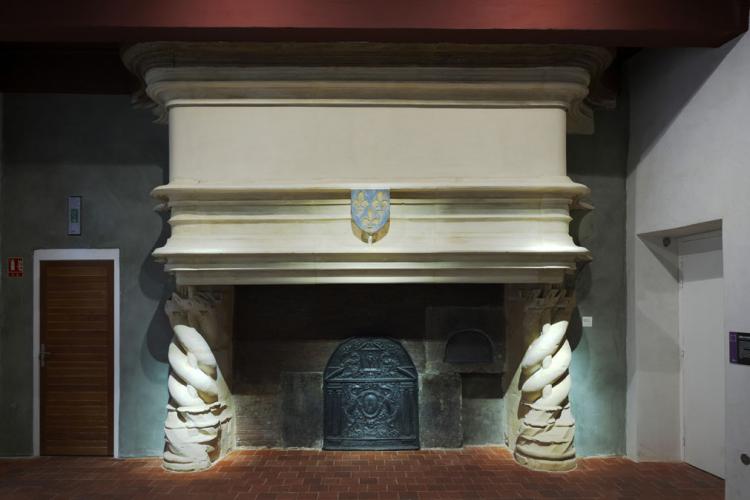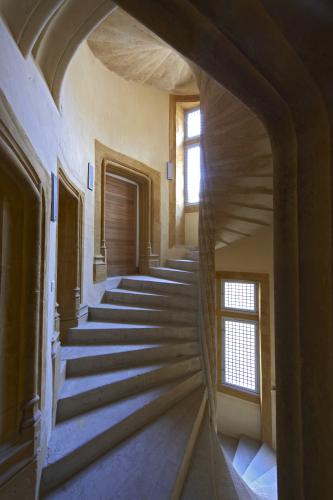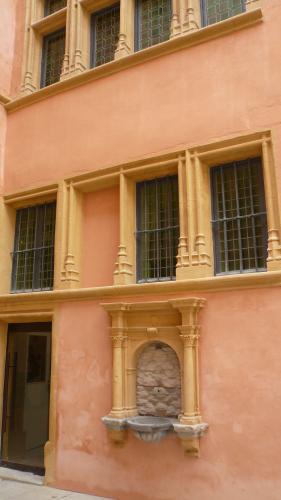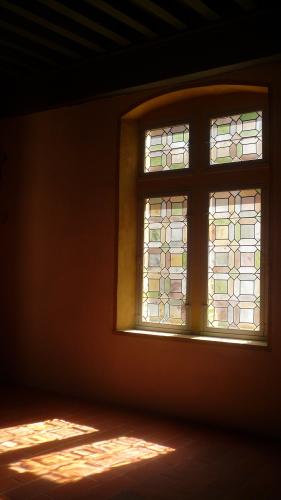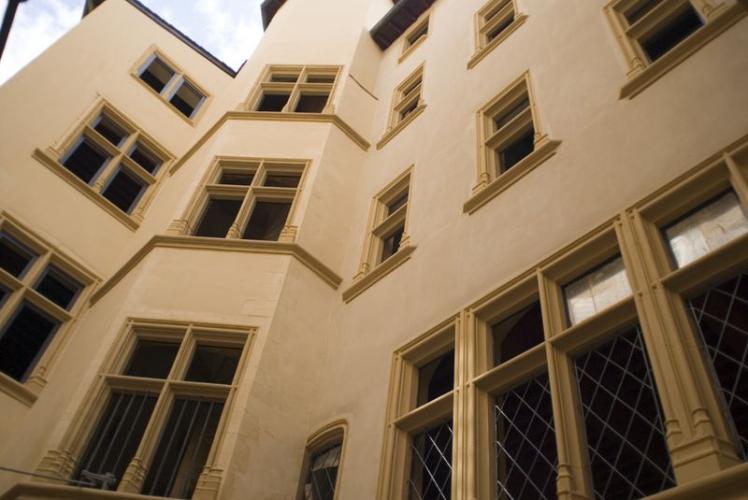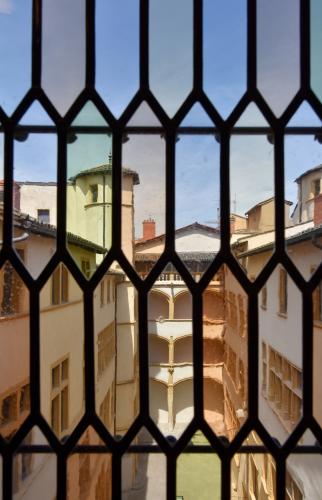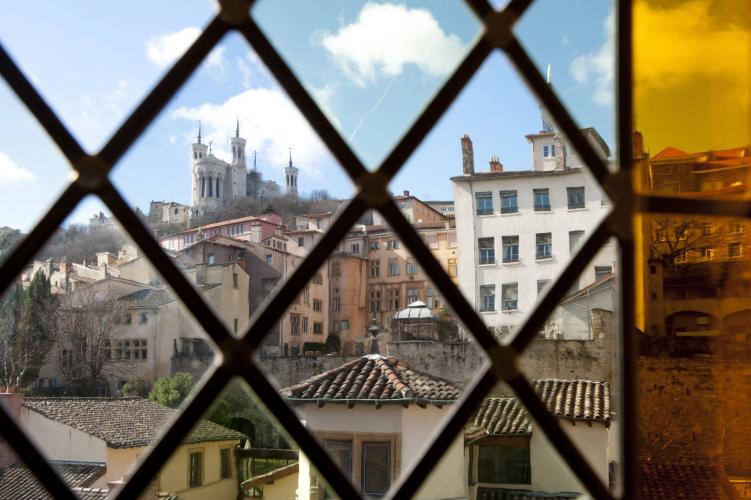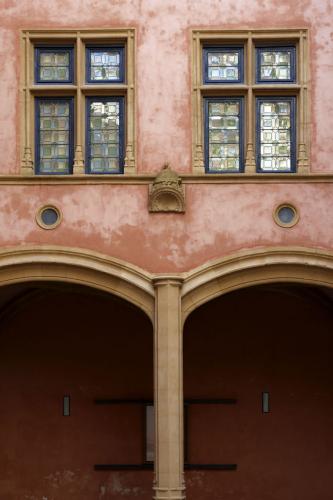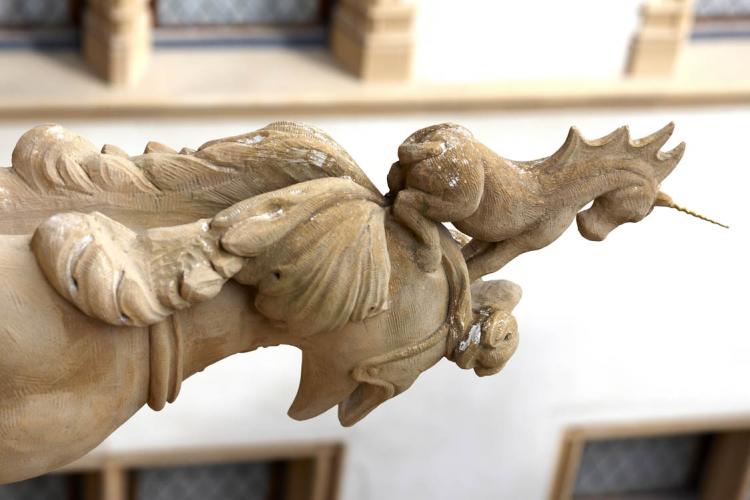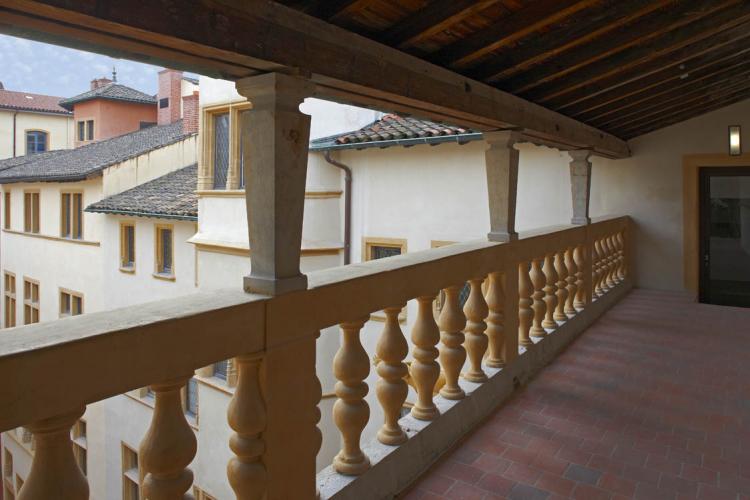Ensemble Gadagne
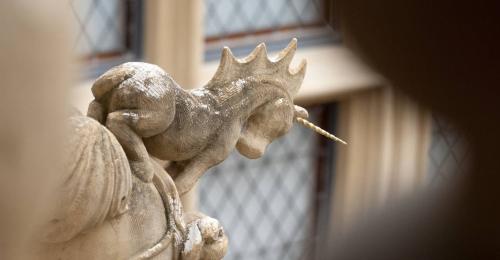
The Gadagne building is one of Lyon's architectural gems, emblematic of the historical district that is a UNESCO world heritage site. It is also the largest building open to the public in the Vieux Lyon.
This historic monument is typical of the Renaissance architecture in Lyon, featuring a magnificent courtyard, spiral staircases, monumental fireplaces, a painted ceiling and furnishings from the 15th and 16th centuries. Discreetly located on the top floor are its terraced gardens, which are a real haven of peace. In short, it has to be on every visitor's list of places to visit !
The main courtyard can be accessed directly from Rue de Gadagne and you can then wander around and go up to the gardens on the 4th floor free of charge. The Hôtel de Gadagne is home to two museums, the Lyon History Museum and the Puppetry Museum. A ticket for admission to both museums will enable you to admire the building's beautiful interiors.
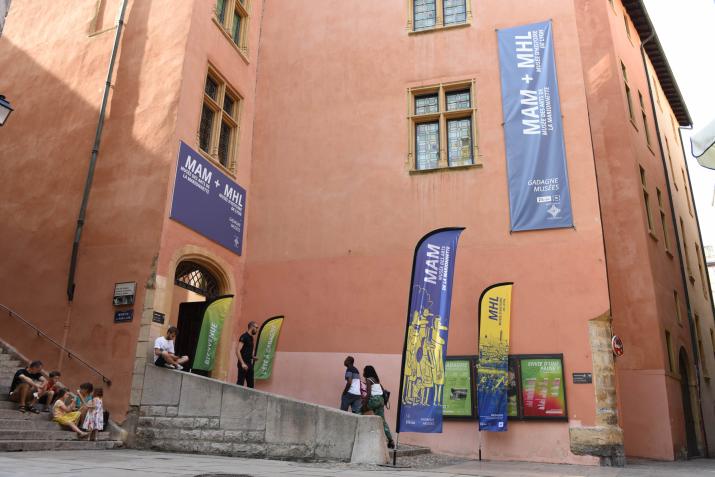
The Renaissance building
The Hôtel des Pierrevive, more commonly known as the Hôtel de Gadagne, is a private mansion built in the early 16th century by the Pierrevive brothers. From 1538, the building was rented and then bought by the family of the famous merchant banker from Florence, Thomas II of Gadagne (Guadagni).
In the 20th century, the building was purchased in stages by the City of Lyon. It acquired listed building status in 1920.
Between 1998 and 2008, the city council carried out major extension and renovation work, together with archaeological excavations.
The Hôtel de Gadagne is now the most extensive Renaissance complex in Lyon.
It is one of Lyon's most prestigious heritage buildings and has witnessed the history of the city for over 500 years.
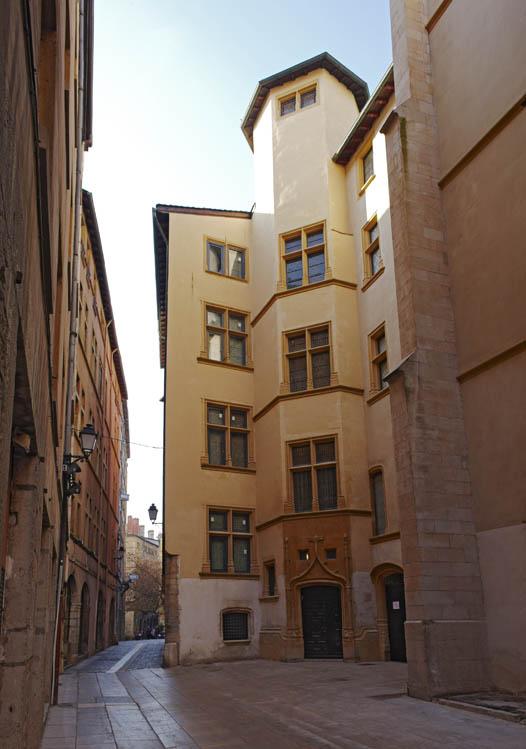
Main courtyard
This is the largest courtyard in the Vieux Lyon, with a special, magical atmosphere that never fails to impress visitors.
The façades, well and north galleries connecting the two buildings date from the 16th century. The three beautiful shades of the façades bear witness to how the building has evolved over the centuries.
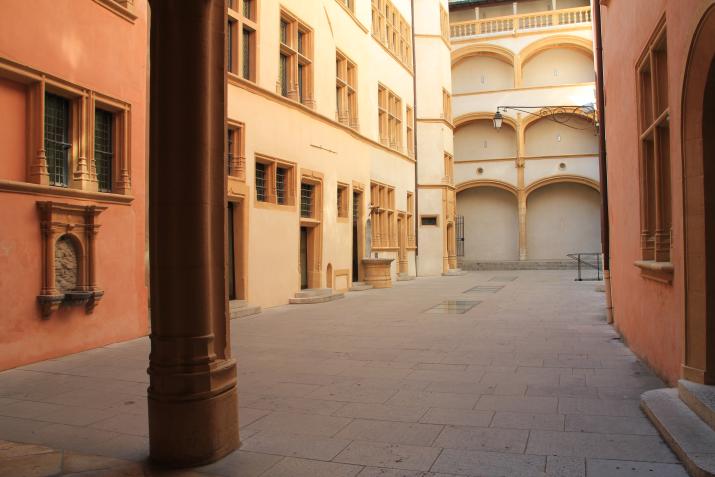
Great Staircase
Visitors strolling through the Lyon History Museum can take this magnificent staircase, following in the footsteps of Marie-Catherine de Pierrevive, a prestigious former resident and lady-in-waiting to Catherine de Medicis. With its twisted core and integrated stone banister, this staircase serves all the floors of the Gadagne building.
The Great Staircase was built around 1515 by the Pierrevive family, who were wealthy spice merchants from the Piedmont region of Italy. At the time, it was the main entrance to the house. Spacious and bathed in light, it opens onto a courtyard, which later became the Rue de Gadagne. The guests of this prestigious family took the staircase to go to the large reception room, which features a monumental fireplace (room 4 of the permanent Portraits of Lyon exhibition).
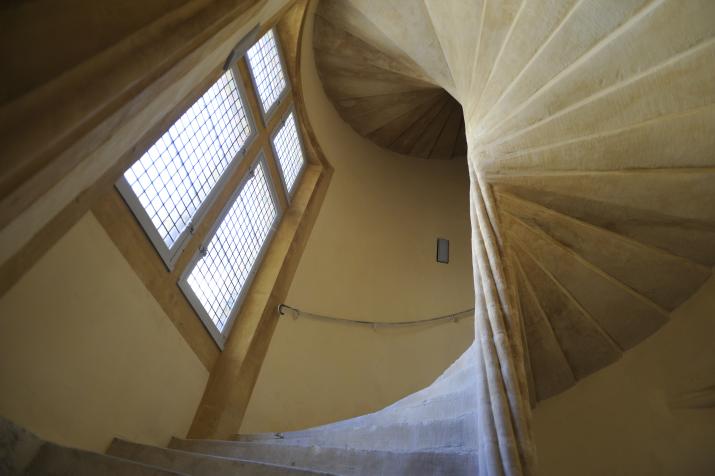
Painted ceiling
This amazing polychrome ceiling, made of wood panelling and papier-mâché, is a listed monument in its own right. Among the illustrious people who occupied Gadagne, André Falconet, doctor and alderman, and his wife, Catherine Quinson, were responsible for much of the redesigning of the building.
André Falconet purchased the property in 1654 and, together with Catherine Quinson, built a prestigious residence in the south section.
Probably built between 1656 and 1661, the ceiling is in three parts, with the centre featuring stretched painted canvases. In the corners, the letters F and Q are the monograms of André Falconet and his wife, Catherine Quinson.
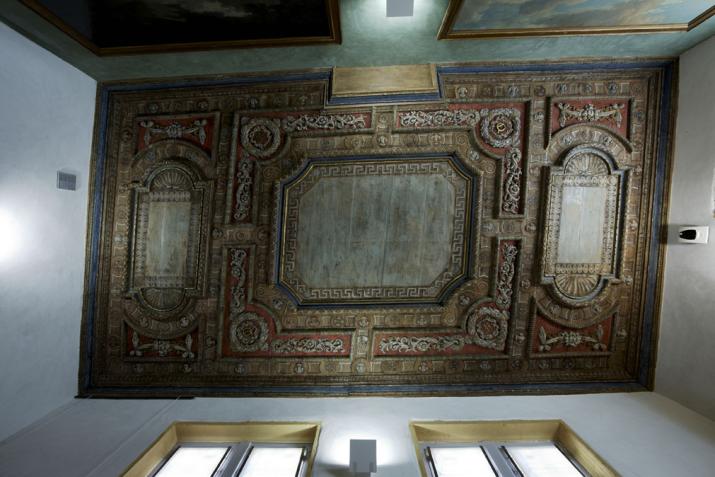
Outstanding rooms
Located on the 2nd floor of the Lyon History Museum, this series of 4 rooms takes visitors back in time, immersing them in the ambiance and interior decoration of the 16th and 17th centuries.
Highlights include the lime plaster, the ochre and Sienna clay surrounding the windows and doors, the wooden interior shutters and the terracotta floor tiles. Even the old plaster has been restored and is currently in an exceptional state of preservation.
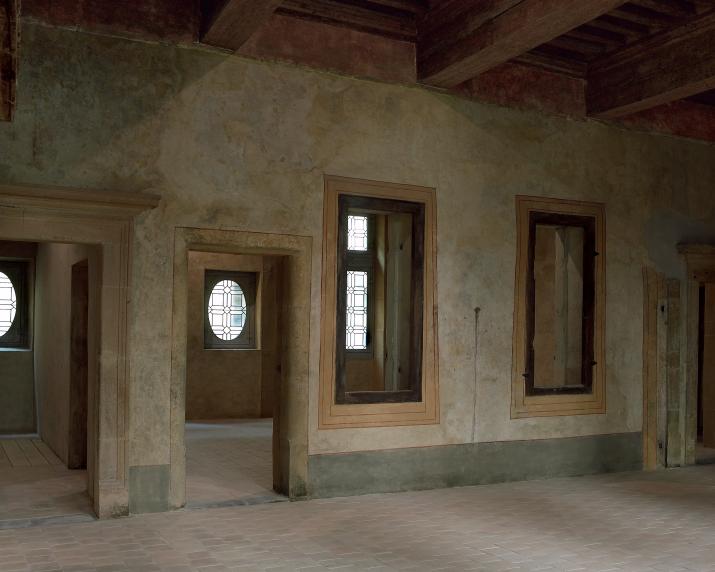
The Charvet Clock, also known as the "Guignol clock"
Built in 1864 by the City's clockmaker Louis Charvet, this astonishing clock features a large bell and animated quarter-jack figurines that joyfully mark the passing of time.
Every quarter of an hour, Harlequin and Polichinelle, characters from the commedia dell'arte, ring four gilded bronze bells, while Gnafron and Guignol, armed with his stick, strike the largest bell.
Finally, every hour, the "Trumpet" comes alive to chime the hour on the big bell.
This carillon is a gem of Lyon's mechanical and theatrical heritage, testifying to the traditional and innovative know-how of the Maison Charvet in the 19th century.
The Charvet Clock was originally installed at 8, rue de la Poulaillerie in Lyon's 2nd district. After acquisition by the City of Lyon in 2005, it was moved to the façade of the Gadagne at the beginning of 2021 following a six-month restoration project.
